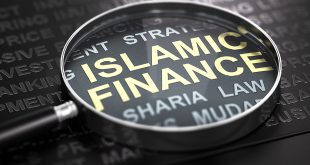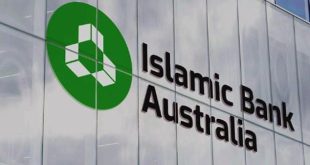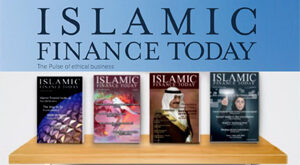Introduction
The subprime mortgage crisis, popularly known as the “mortgage mess” or “mortgage meltdown”, came to the world’s attention when a surge in US home foreclosures (repossessions) started in 2006 and spiralled seemingly out of control in 2007 and 2008. It triggered a national financial crisis that went global within two years. It has caused billions of dollars losses to banks and financial institutions that were involved in subprime lending. Besides, this crisis has plummeted stock markets across the globe.
There is a substantial amount of criticism on the lack of regulatory monitoring and excessive interest rates in the conventional banking and financing system that contributed to the subprime mortgage crisis.
What is prime and subprime mortgage?
The main difference between prime and subprime mortgages in conventional banking lies in the risk profile of the borrower and the interest rates charged on them. Subprime mortgages are loans extended to high risk borrowers to purchase real estate property. Specifically, lenders differentiate among mortgage applicants by using loan risk grades based on factors such as their credit history, previous loan defaults or bankruptcy filings, debt-to-income (DTI) ratios, and the level of documentation provided by applicants to verify their income.
Next, the lenders determine interest rates of a mortgage in a given risk grade based on the borrower’s credit risk score, for example, the Fair, Isaac and Company (FICO) score, and the size of the down payment. Eligible borrowers for prime loans have a FICO credit score above 620, a debt-to-income ratio (DTI) not greater than 55 percent (meaning that not more than 55 percent of their net income pays for housing and other debt) and a combined loan-to-value (LTV) ratio of 90 percent, meaning that the borrower has to pay a minimum of 10 percent downpayment. Lenders charge the prevailing market interest rates to prime loan borrowers with lower credit risks. Generally, subprime lending encompasses a variety of credit instruments including subprime mortgages, subprime car loans and subprime credit cards, among others.
Causes of subprime mortgage crisis
Excessive interest rates led to subprime mortgage crisis
There are many theories as to what led to the subprime mortgage into a crisis. Many experts and economists believe it came about through the combination of a number of factors in which subprime lending played a major part. One of the main factors is the interest rates charged on the subprime mortgage loans. Historically low interest rates were charged in the US for mortgage loans during the initial years of 2000.
This was mainly to boost the American economy which was slowing down due to the Dot.Com crash and the September 11 attacks. The Federal Reserve Board (Fed) reduced short-term interest rates from about 6.5 percent to 1 percent. Former Chairman of the Fed, Alan Greenspan, admitted in 2007 that the housing bubble was “fundamentally engendered by the decline in real long-term interest rates”.
Many subprime mortgages were Adjustable Rate Mortgages (ARMs) in which the interest rates are subjected to revisions when the market interest rates increase. Besides that an estimated one-third of ARMs originating between 2004 and 2006 had “teaser” rates below 4 percent. A “teaser” rate is very low but for a temporary period only and would increase significantly after the initial “honeymoon” period. These increases can sometimes be doubling the monthly repayment amount. The subprime borrowers were literally trapped in this tricky interest rate arrangement. Initially the borrowers found the interest rates to be well affordable for their income level, but when the ARMs were revised to higher rates the borrowers had no other choice than to default in their repayments.
This situation certainly could not have happened in the Islamic financing system. Islamic finance is defined as a financial system based on Islamic law known as Shari’ah. Islamic finance is limited to financial relationships involving entrepreneurial investment subject to the moral prohibition of (i) interest earnings or usury (riba) on money lending, (ii) haram (sinful activity), such as direct or indirect association with lines of businesses involving alcohol, pork products, firearms, tobacco, and vulgar entertainment, (iii) speculation, betting, and gambling (maisir), including the speculative trade or exchange of money for debt without an underlying asset transfer, (iv) the trading of the same object between buyer and seller (bay’ al inah), as well as (v) preventable uncertainty (gharar) such as all financial derivative instruments, forwarding contracts, and future agreements.
As opposed to conventional finance, where interest represents the contractible cost for funds tied to the amount of principal over a lending period, the central tenet of the Islamic financial system is the prohibition of “riba” (the interest earnings), meaning “an excess” which is interpreted as any unjustifiable increase of capital through loans. The general consensus among Islamic scholars is that riba covers not only usury but also the charging of interest and any positive, fixed predetermined rate of return that are guaranteed regardless of the performance of an investment.
Since only interest-free forms of finance are considered permissible in Islamic finance, financial relationships between financiers and borrowers are governed by shared business risk (and returns) from investment in lawful activities (halal). The participants in banking transactions are considered business partners who jointly bear the risks and profits. The transfer of funds from clients to the bank (depositing) is based on revenue-sharing usually calculated ex post on a monthly basis and the transfer of funds from the bank to the clients is based on profit-sharing (lending, financing), either at a mutually agreed-upon ratio “mudarabah” or at a mutually agreed-upon fixed rate. The word “mudarabah” means a profit sharing partnership in which one contributes the capital (bank) and the other (customer) manages the project.
Islamic banks finance only real transactions with underlying assets. Speculative investments such as margin trading and derivatives transactions are prohibited. Lending, or financing, must be backed by collateral. Collateral-free lending would normally be considered as containing a speculative element or moral hazard. Similarly, to avoid speculation and moral hazard, only investors with sufficient level of income can qualify for financing.
Islamic law does not object to payment for the use of an asset, and the earning of profits or returns from assets are indeed encouraged as long as both lender and borrower share the investment risk together. Profits must not be guaranteed based on assumption and can only accrue if the investment itself yields income. Any financial transaction under Islamic law assigns to investors clearly identifiable rights and obligations for which they are entitled to receive commensurate return. While the elimination of interest is fundamental to Islamic finance, Shari’ah compliant investment behaviour also aims to eliminate exploitation pursuant to Islamic law.
The emergence of securitization led to subprime mortgage crisis
The emergence of innovative lenders who are the non-banking and non government agency lenders is another factor that has caused the subprime mortgage crisis. These lenders are not regulated as the traditional banks. They invented new methods of mortgage lending through securitization. The securitization can be defined as a structured finance process in which assets, receivables or financial instruments are acquired, classified into pools and offered as collateral for third-party investment. In this new mortgage process the banks and lending institution lend money to home a buyer from extended funding by selling the mortgage documents to third party investors in the security and bond markets through issuers as Mortgage Backed Securities (MBSs) or as Collateralized Debt Obligations (CDOs). The securitization of mortgage loans is a complex and multistage activity that involves a number of different players along the entire process.
Shari’ah principles prohibit selling “a debt against a debt”. In Islamic financing the permissibility of risky capital investment without explicit interest earning has spawned several finance techniques under Islamic law. There are three basic forms of Islamic financing methods for both investment and trade finance: (i) synthetic loans (debt-based) through a sale-repurchase agreement or back-to-back sale of borrower or third party-held assets, (ii) lease contracts (asset-based) through a sale-leaseback agreement (operating lease) or the lease of third-party acquired assets with purchase obligation components (financing lease), and (iii) profit-sharing contracts (equity-based) of future assets. As opposed to equity-based contracts, both debt-based and asset-based contracts are initiated by a temporary transfer of existing assets from the borrower to the lender or the acquisition of third-party assets by the lender on behalf of the borrower.
However, this does not mean that securitization is totally prohibited in the Islamic financing system. There is permissible securitization in Islamic law, where the ownership of an asset is effectively divided into pieces and distributed in a manner similar to shares in a mutual fund. This is distinct from an Islamically non-permissible securitization of cash flows whereby investors might buy shares of interest, principal, both or margin as compared to what is based on markup interest in the conventional financing system. In the recent developments with Freddie Mac, an ijara wa iqtina (mean ‘leasing and acquisition’ and it is variably called ijara muntahi bitamlik, ‘leasing ending in ownership’ or lease to own) process has been securitized. In this case, the obligations of the lessee have been structured into a note by the holder and sold to Freddie Mac and the holder of the property has granted a mortgage to secure the note. If in the Islamic perspective, the note represents an aspect of property ownership, then the relationship is permissible.
Other factors that led to subprime mortgage crisis
There are two other factors that led mortgage lending into a crisis. They are the act of predatory lending and predatory borrowing. Predatory lending is the practice of a lender deceptively convincing borrowers to agree to unfair and abusive loan terms, or systematically violating those terms in ways that make it difficult for the borrower to defend against. Other types of lending sometimes also referred to as predatory include payday loans, credit cards or other forms of consumer debt and overdraft loans, when the interest rates are considered unreasonably high. In predatory lending the lenders charge excessive interest rates, prepayment penalties for refinancing an existing mortgage and other forms of charging excessive fees by mortgaging the same loan many times. Predatory borrowing on the other hand is a fraudulent practice of the borrower who provides falsified income statements or lies about his income to be many times higher than the actual amount. These actions are totally prohibited in Islamic financing law. Islamic economic models emphasize fairness. This is reflected in the requirement that everyone involved in a transaction makes informed decisions and is not misled or cheated. On a macro-economic level, Islamic models aim at social justice and the economic prosperity of the whole community. Islam encourages and promotes the right of individuals to pursue personal economic wellbeing, but makes a clear distinction between what commercial activities are allowed and what are forbidden. For example, transactions involving gambling and other socially detrimental activities are strictly prohibited.
Conclusion
While the global economic system is being rattled by the US subprime mortgage crisis, the ‘Islamic finance model’ may be the answer to this persistent economic turmoil. The current global economic crisis has opened many windows of opportunities for Islamic finance. This crisis is seen as a big opportunity for Islamic finance as it has the capacity and capability to bring stability to the economy. This global crisis which caused colossal financial loses running in billions of dollars, would have not occurred if the Islamic principles regarding mortgage backed securities (MBSs) and collateralized debt obligations (CDOs) were in vogue in the international financial market. Islamic bonds (sukuks), carrying unique structure features, cannot fall foul of a crisis such as subprime mortgage crisis. Subprime mortgages are backed by dubiously rated collateralized debt packages which subsequently precipitated a global credit crunch.
It is the right time for the Islamic banking industry to present solutions to the global economic community in the wake of the crisis. The devastating subprime mortgage crisis would technically be unthinkable in the Islamic capital markets sector because it would be against Shari’ah principles to sell a debt against a debt. There is a very simple rule in Islamic trade, which clearly says that you cannot sell unless you possess. The present crisis has seen trillions of dollars trading without backing of assets. If such transactions followed the Islamic finance models it would have easily prevented the current economic crisis.
© Islamic Finance Today – Pioneer Publications (Pvt) Ltd
 Sri lanka Muslims Web Portal Diversity and Inclusiveness
Sri lanka Muslims Web Portal Diversity and Inclusiveness



